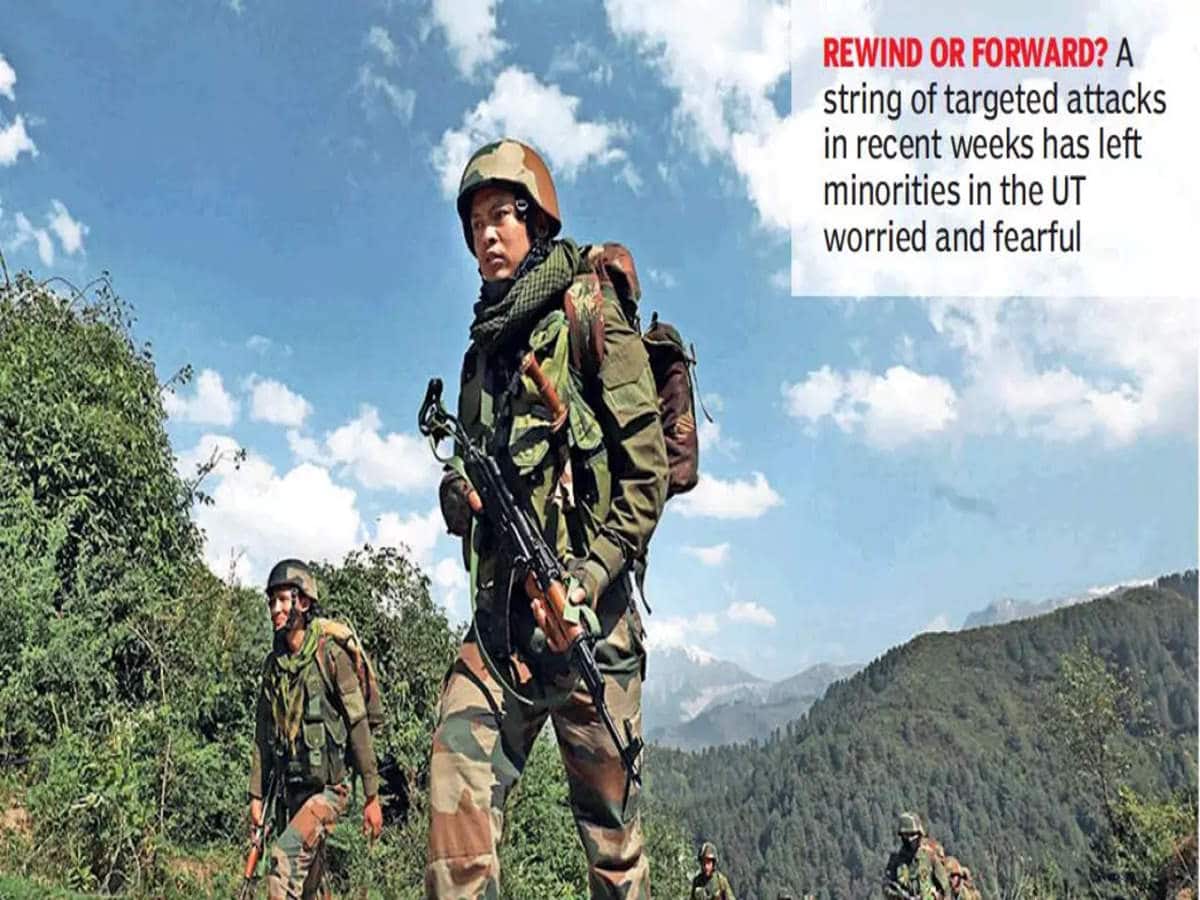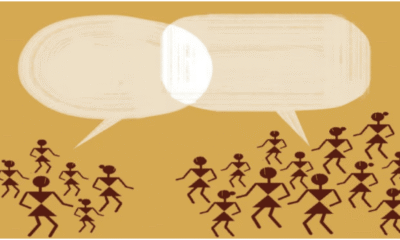
|
Getting your Trinity Audio player ready...
|
For: Ram Madhav
Recent killings alarming but political discourse has shifted to development
What is the objective of the Union government in Jammu & Kashmir? Lt Governor Manoj Sinha has summed it up beautifully: “The objective is not to buy peace but establish it”. Terrorism, separatism, violence and anti-national activities of civilian and political activists have plagued the state for decades, leaving people fearful and the administration in paralysis. They hampered civil life, development activity and normal political process. Response of the governments in the past has been essentially to manage the conflict and buy peace. Never was there the courage to root out the problem.
When the Modi government decided to take on these forces by uprooting their very raison d’etre —Article 370—in August 2019, there were apprehensions all around. Opposition leaders predicted a bloodbath. Some of them hoped that there would be a massive outburst of popular anger on the streets of J&K. But nothing of that sort happened. The Valley remained peaceful. The few protests that did happen in the immediate aftermath of August 5, 2019 were handled by security forces with utmost sensitivity resulting in not a single civilian casualty. People in J&K had experienced life under Article 370 for seven decades. They now seemed open to experiencing life without it.
Abrogation of Article 370 has helped in sharper security operations resulting in greater success in anti-terror operations. A study undertaken by Soumya Chaturvedi of the India Foundation showed that there were 91 terror incidents targeted towards civilians and security forces in 2019 which came down to 74 in 2020 and 65 till September 2021. Likewise, the number of terrorists arrested has increased from 84 in 2019 to 279 in 2020 while the number of terrorists killed has increased from 161 in 2019 to 232 in 2020. Thirteen terrorist hideouts were busted in 2019 while that number has gone up to 44 in 2020, along with unearthing of several illegal cross-border tunnels. Until September 2021, 171 terrorists had been arrested, 120 neutralised and 27 hideouts busted.
All this seems to have flummoxed the malefactors across the border who had been hoping for a major resistance to erupt in the state. Since it has become almost impossible for them to undertake any major terror incident using heavy weapons like AK 56 rifles, they are resorting to lonewolf attacks like the ones witnessed recently using small-time ruffians and small weapons like pistols. They are also using newer tactics like using drones and rocket-propelled grenade launchers.
No doubt the recent spate of killings in Srinagar and other parts is unfortunate and alarming. The use of newer technologies and the new-found euphoria in sections of radicalised youth after the rise of Taliban in Afghanistan are challenges security agencies face today. But the larger question to ponder is why the terrorists were forced to change their tactics. It is essentially due to the successes achieved by the government in the last two years not only on the security front but also on the political and development fronts.
Once dominated by separatist cacophony, the political discourse in Kashmir is now largely development and aspiration centric. Soft-separatist voices of leaders like Mehbooba Mufti have been marginalised and isolated. A blend in regional and national political agendas was witnessed at the meeting of J&K leaders hosted by Prime Minister Modi a few months ago where the predominant discourse was about granting statehood to the UT.
In the last few years, J&K has moved in the direction of firmly establishing grassroots democracy. The days when the state was being run by a handful of politicians from Srinagar have gone. An elected three-tier Panchayat Raj system including village, block and district panchayats was put in place. These grassroots elected leaders were provided with funds, functions and functionaries. On the development front, the UT is achieving great successes. The Niti Aayog has declared J&K as an ‘achiever’ in SDGs. The UT has attracted investment commitments to the tune of Rs 26,000 crore in the last couple of years. It is expected that the investment inflow will further increase to over Rs 50,000 crore leading to generation of one million jobs. Educational, health and civic infrastructure in the state too has improved tremendously with new educational institutions, hospitals, tunnels and roads coming up. Lifeline of the state, tourism, has witnessed tremendous rise in numbers with more than 13 lakh visitors in September alone. Return of Kashmiri Hindus has started with 3,000 job recruitments since 2018.
Jammu & Kashmir is going through a major transformation after the much-needed neutralisation of Article 370. The wounds created by faulty and compromising policies in the past were deep. The heavy dose of realism administered by the Modi government is yielding results. In the meantime, the Opposition will do well to overcome the tendency of subjecting government’s direction to daily calumny and the media will do well to desist from subjecting the people of Kashmir to a daily patriotism test.
Against: Sajad Lone
The only gainers in this new set-up are the bureaucracy
I don’t agree that an era of change has been set in J&K by virtue of some policy of the Union government. I am surprised that there is a motion at all about the report card of an administration which is selected and not elected. Assume for a moment that the policy of the Union government is working. What is the cost? The cost is in terms of democracy. Who will decide in a federal structure that the state of affairs is good or bad in a particular province and that intervention is needed. And who will decide that the intervention by the federal government has been good or bad, and that it is now time to hand over the reins of governance back to the people of that province. In the federal context, the whole concept of people-less intervention by the federal government doesn’t fall within the realm of democracy.
The current situation in J&K is more about harm to democracy in the federal context than the state of affairs in J&K. Such is the power of the ideological discourse that respected media institutions across the country seem to have forgotten that the current administration in J&K is a selected administration, not an elected administration. And selected administrations are antithetical to the concept of democracy. Administrations can either be democratic or undemocratic. That we are saddled with an administration not belonging to the people of J&K continues not to be the debate across India is a deeply worrying and disturbing trend.
When we move on from the democracy debate and try to evaluate progress on the ground, there is little or nothing to show. The policy of the Centre in terms of achieving administrative excellence is simply not working. There is no administrative excellence to show case. Things have become worse as they would in any other part of India if it were outsourced to bureaucrats. The development indicators of J&K were in no way starkly different from the rest of the country in the past. We were doing quite well and we may now not be doing quite well. We are topping in unemployment though, across the country at 21%, according to the latest data released. Development has taken a back seat. Decision making is arbitrary and every bureaucrat walking around in the secretariat is the new Kashmir expert in town. The recurring theme of conversations with the current rulers of J&K is how they need time to remedy things. And for heaven’s sake what was wrong in the first place and what are they going to remedy? What have bureaucrats remedied in the rest of the country that is yet to be remedied in J&K? The only creed empowered in the last three years is the bureaucracy.
They are having an extended honeymoon and enjoying every moment and wishing and praying that these moments become everlasting. This is sadly the biggest takeaway. The central government by virtue of their actions has invented a new creed of bureaucrats who are totally invested in the current status quo. They openly lay scorn on the concept of an elected government and are happy working in a government “by them and for them”. These are the new gainers in the current set-up. And they are the scriptwriters of doom of the past and “glory” of the future. Far from administrative excellence, there is administrative paralysis in the state administration. The rulers and the ruled have nothing in common. They are two different species living on two different planets.
I would strongly argue that reality needs to be reflected as it exists in J&K. Reality cannot and should not be viewed through the prism of a certain version of nationalism. The reality as I see it is that the people of J&K have been disempowered. And even sadder is the reality that people in the rest of the country have been fed a version by virtue of which they seem to be justify what is being done in J&K. The need of the day is to restore democracy. Elected governments bring in revolutions of change, revolutions of development. One could argue that if the current model of governance in J&K is so good, why don’t we apply the same model of governance in the rest of the country? I would never for the sake of my countrymen ever recommend this model of governance for any state or for the rest of the country. And I sincerely hope that my fellow countrymen will replicate the emotion and facilitate and advocate the return of democracy in J&K.



